Abstract
The ability of Phanerochaete chrysosporium to degrade six alkyl halide insecticides (aldrin, dieldrin, heptachlor, chlordane, lindane, and mirex) in liquid and soil-corncob matrices was compared by using 14C-labeled compounds. Of these, only [14C]lindane and [14C]chlordane underwent extensive biodegradation, as evidenced by the fact that 9.4 to 23.4% of these compounds were degraded to 14CO2 in 30 days in liquid cultures and 60 days in soil-corncob cultures inoculated with P. chrysosporium. Although [14C]aldrin, [14C]dieldrin, [14C]heptachlor, and [14D]mirex were poorly mineralized, substantial bioconversion occurred, as determined by substrate disappearance and metabolite formation. Nonbiological disappearance was observed only with chlordane and heptachlor.
Full text
PDF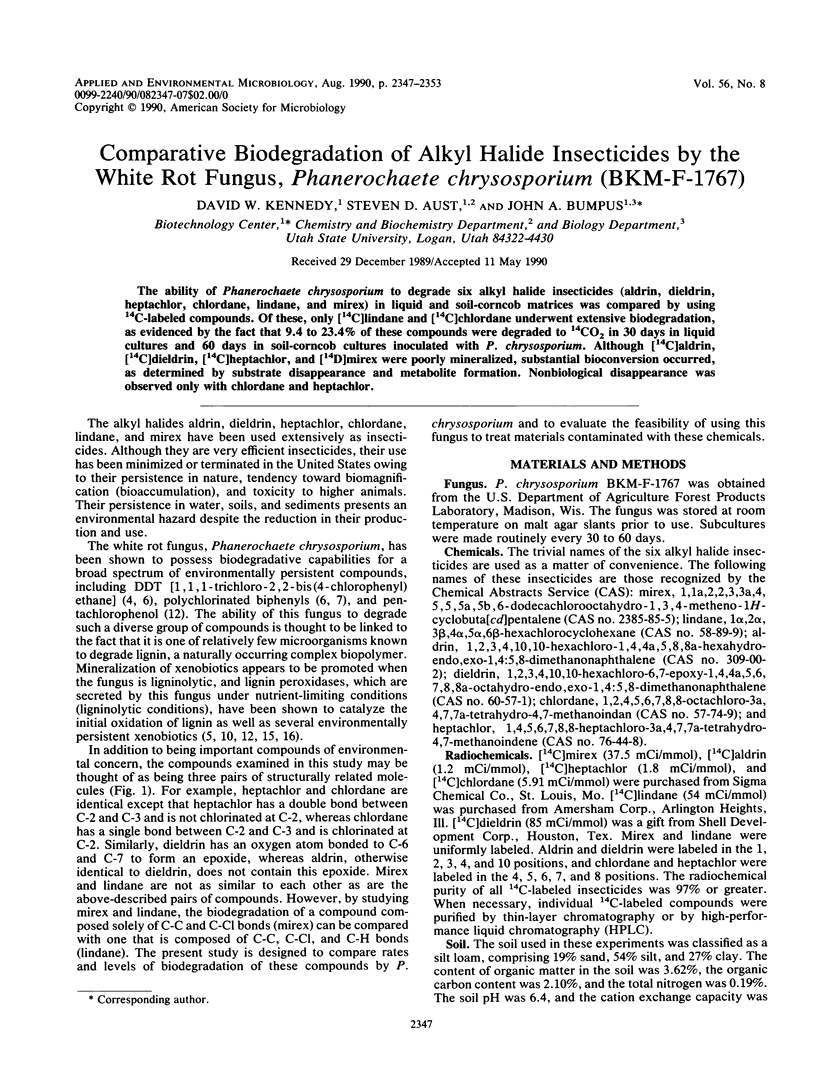
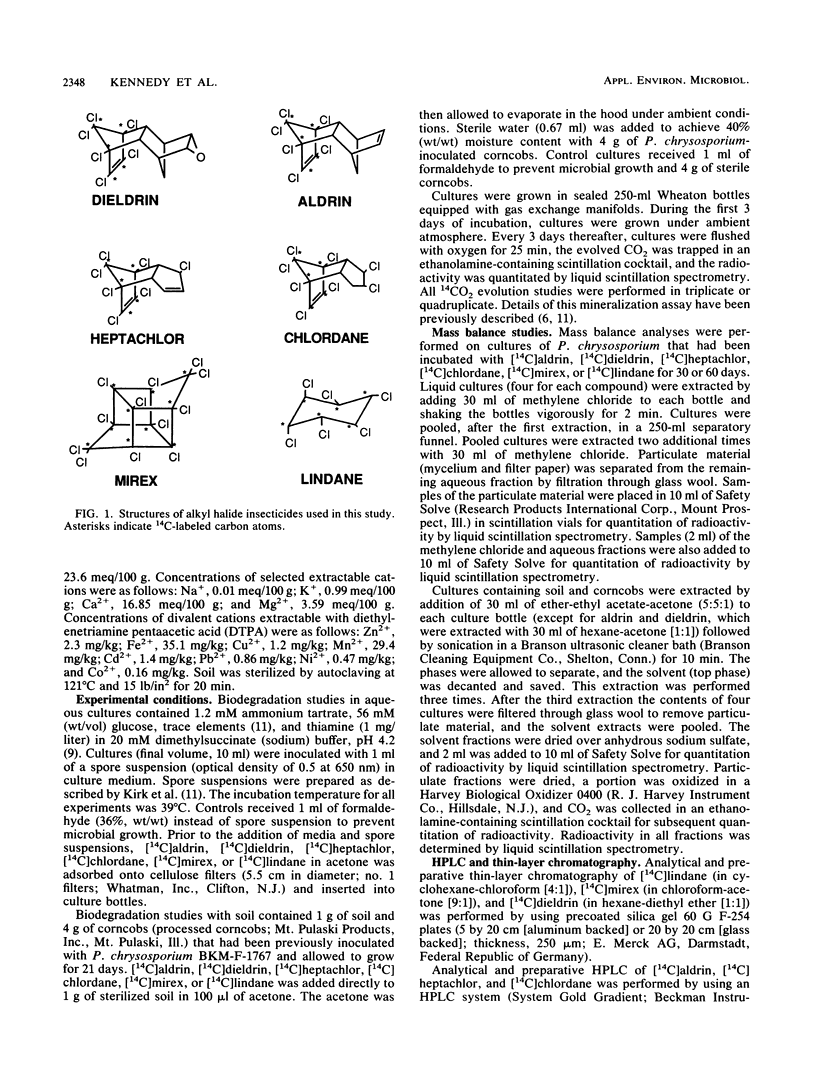
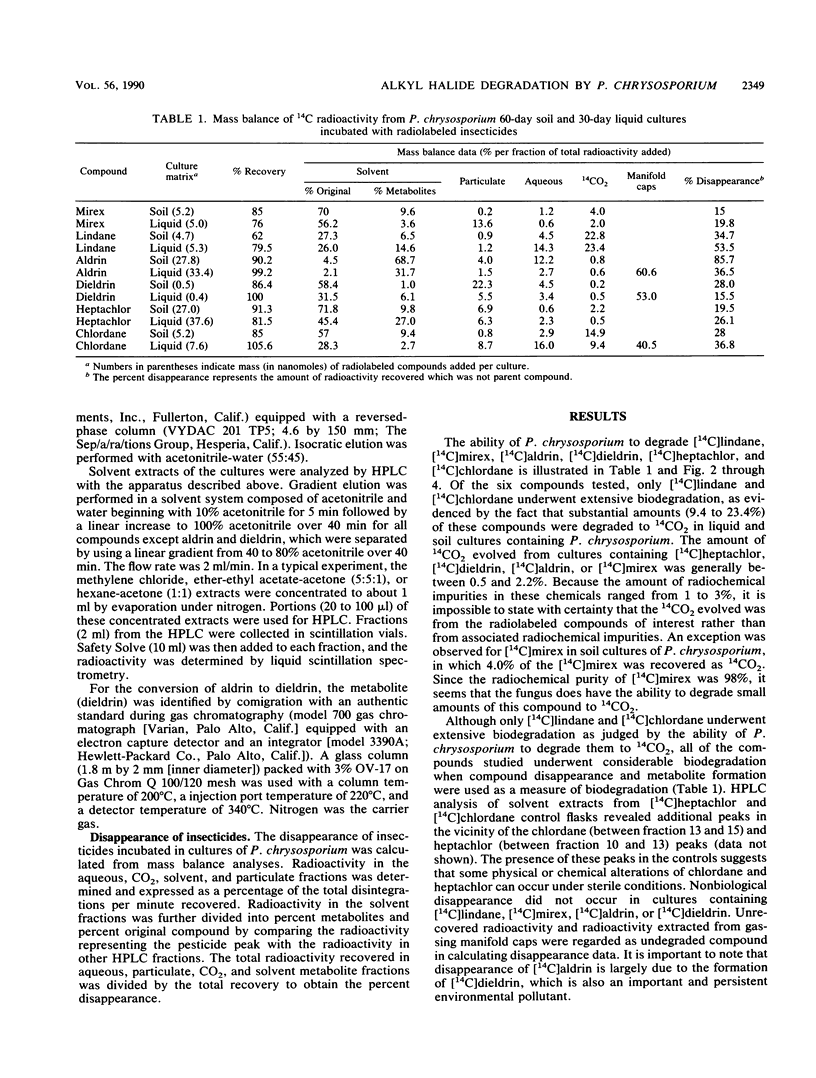
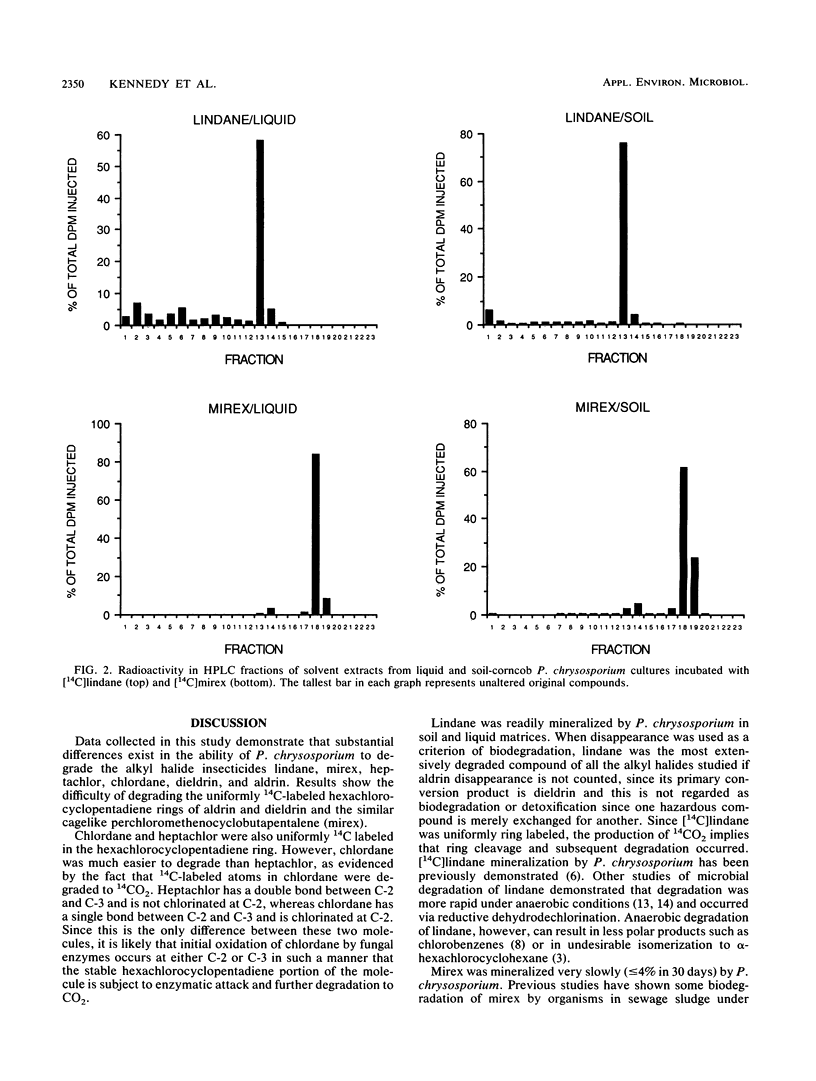
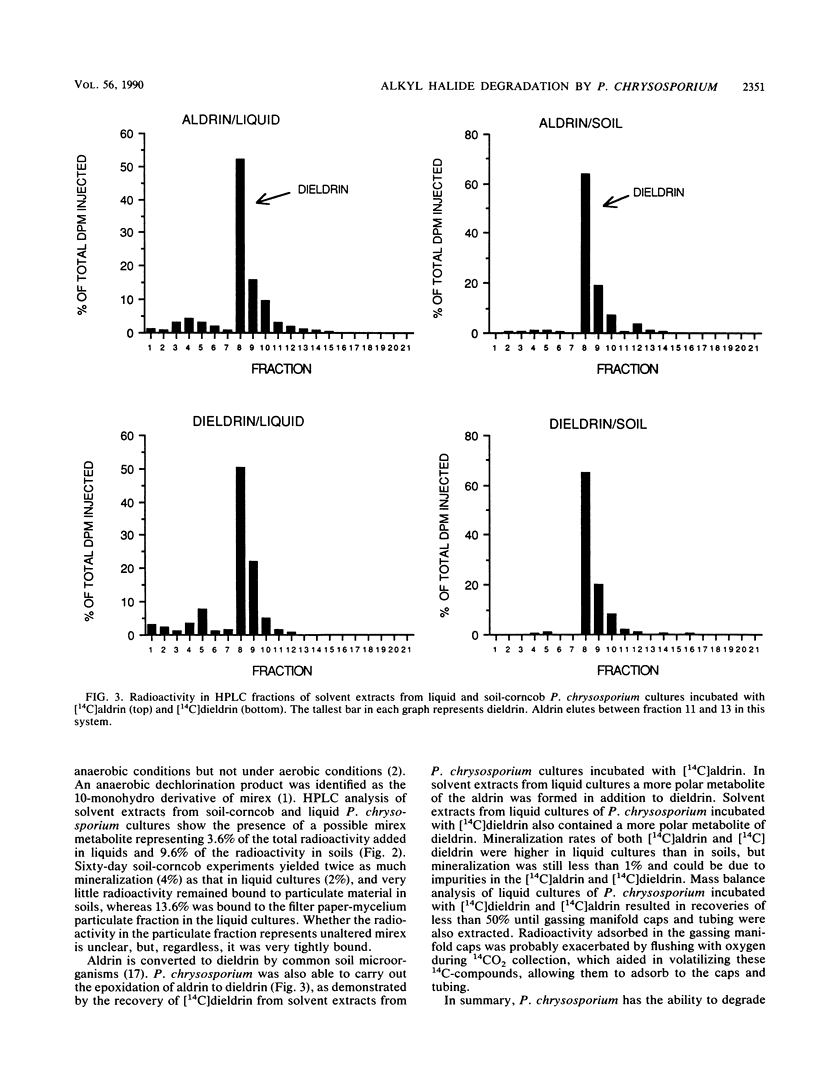
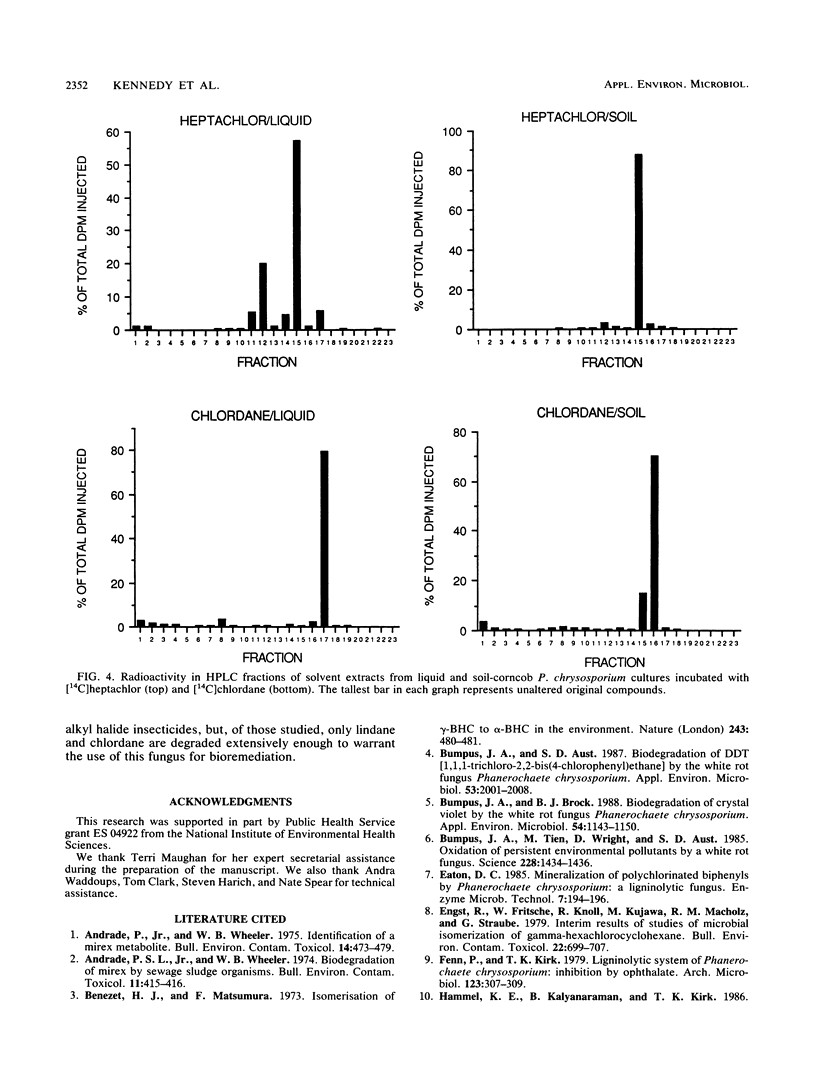
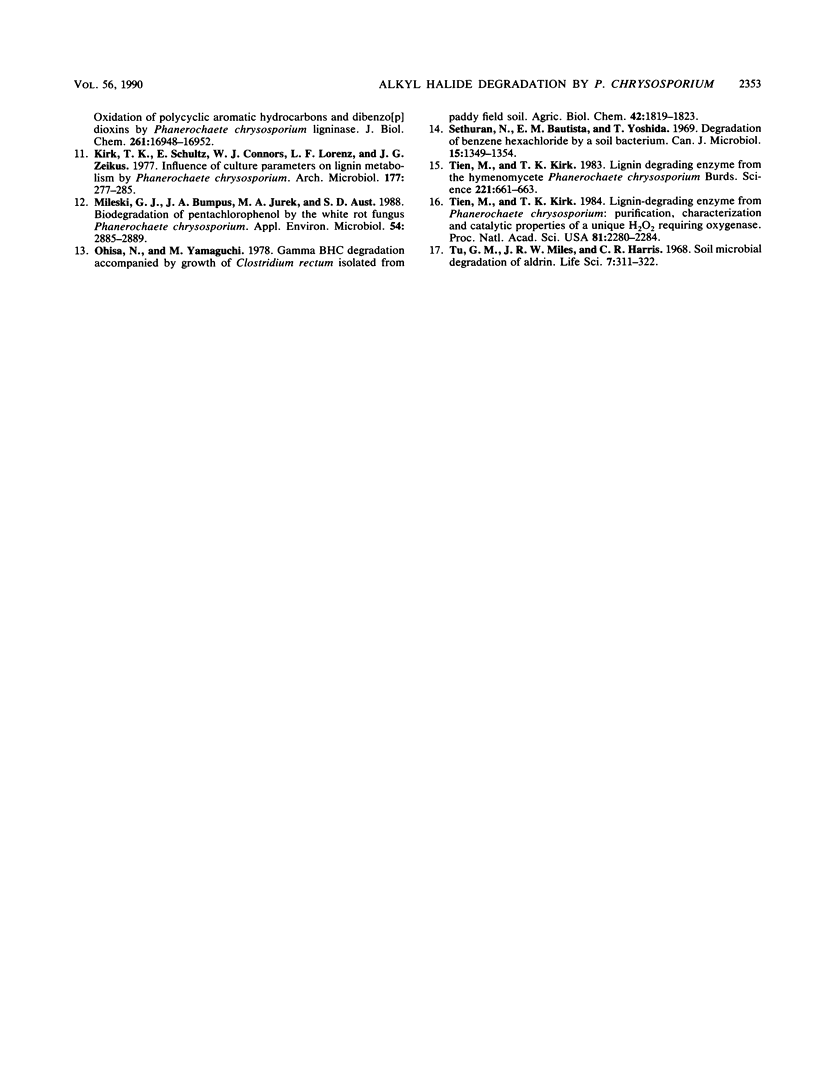
Selected References
These references are in PubMed. This may not be the complete list of references from this article.
- Andrade P. S., Jr, Wheeler W. B. Biodegradation of mirex by sewage sludge organisms. Bull Environ Contam Toxicol. 1974 May;11(5):415–416. doi: 10.1007/BF01685296. [DOI] [PubMed] [Google Scholar]
- Andrade P., Jr, Wheeler W. B., Carlson D. A. Identification of a Mirex Metabolite. Bull Environ Contam Toxicol. 1975 Oct;14(4):473–479. doi: 10.1007/BF01705515. [DOI] [PubMed] [Google Scholar]
- Bumpus J. A., Aust S. D. Biodegradation of DDT [1,1,1-trichloro-2,2-bis(4-chlorophenyl)ethane] by the white rot fungus Phanerochaete chrysosporium. Appl Environ Microbiol. 1987 Sep;53(9):2001–2008. doi: 10.1128/aem.53.9.2001-2008.1987. [DOI] [PMC free article] [PubMed] [Google Scholar]
- Bumpus J. A., Brock B. J. Biodegradation of crystal violet by the white rot fungus Phanerochaete chrysosporium. Appl Environ Microbiol. 1988 May;54(5):1143–1150. doi: 10.1128/aem.54.5.1143-1150.1988. [DOI] [PMC free article] [PubMed] [Google Scholar]
- Bumpus J. A., Tien M., Wright D., Aust S. D. Oxidation of persistent environmental pollutants by a white rot fungus. Science. 1985 Jun 21;228(4706):1434–1436. doi: 10.1126/science.3925550. [DOI] [PubMed] [Google Scholar]
- Engst R., Fritsche W., Knoll R., Kujawa M., Macholz R. M., Straube G. Interim results of studies of microbial isomerization of gamma-hexachlorocyclohexane. Bull Environ Contam Toxicol. 1979 Jul;22(4-5):699–707. doi: 10.1007/BF02027010. [DOI] [PubMed] [Google Scholar]
- Hammel K. E., Kalyanaraman B., Kirk T. K. Oxidation of polycyclic aromatic hydrocarbons and dibenzo[p]-dioxins by Phanerochaete chrysosporium ligninase. J Biol Chem. 1986 Dec 25;261(36):16948–16952. [PubMed] [Google Scholar]
- Mileski G. J., Bumpus J. A., Jurek M. A., Aust S. D. Biodegradation of pentachlorophenol by the white rot fungus Phanerochaete chrysosporium. Appl Environ Microbiol. 1988 Dec;54(12):2885–2889. doi: 10.1128/aem.54.12.2885-2889.1988. [DOI] [PMC free article] [PubMed] [Google Scholar]
- Sethunathan N., Bautista E. M., Yoshida T. Degradation of benzene hexachloride by a soil bacterium. Can J Microbiol. 1969 Dec;15(12):1349–1354. doi: 10.1139/m69-245. [DOI] [PubMed] [Google Scholar]
- Tien M., Kirk T. K. Lignin-Degrading Enzyme from the Hymenomycete Phanerochaete chrysosporium Burds. Science. 1983 Aug 12;221(4611):661–663. doi: 10.1126/science.221.4611.661. [DOI] [PubMed] [Google Scholar]
- Tien M., Kirk T. K. Lignin-degrading enzyme from Phanerochaete chrysosporium: Purification, characterization, and catalytic properties of a unique H(2)O(2)-requiring oxygenase. Proc Natl Acad Sci U S A. 1984 Apr;81(8):2280–2284. doi: 10.1073/pnas.81.8.2280. [DOI] [PMC free article] [PubMed] [Google Scholar]
- Tu C. M., Miles J. R., Harris C. R. Soil microbial degradation of aldrin. Life Sci. 1968 Mar 15;7(6):311–322. doi: 10.1016/0024-3205(68)90028-3. [DOI] [PubMed] [Google Scholar]


